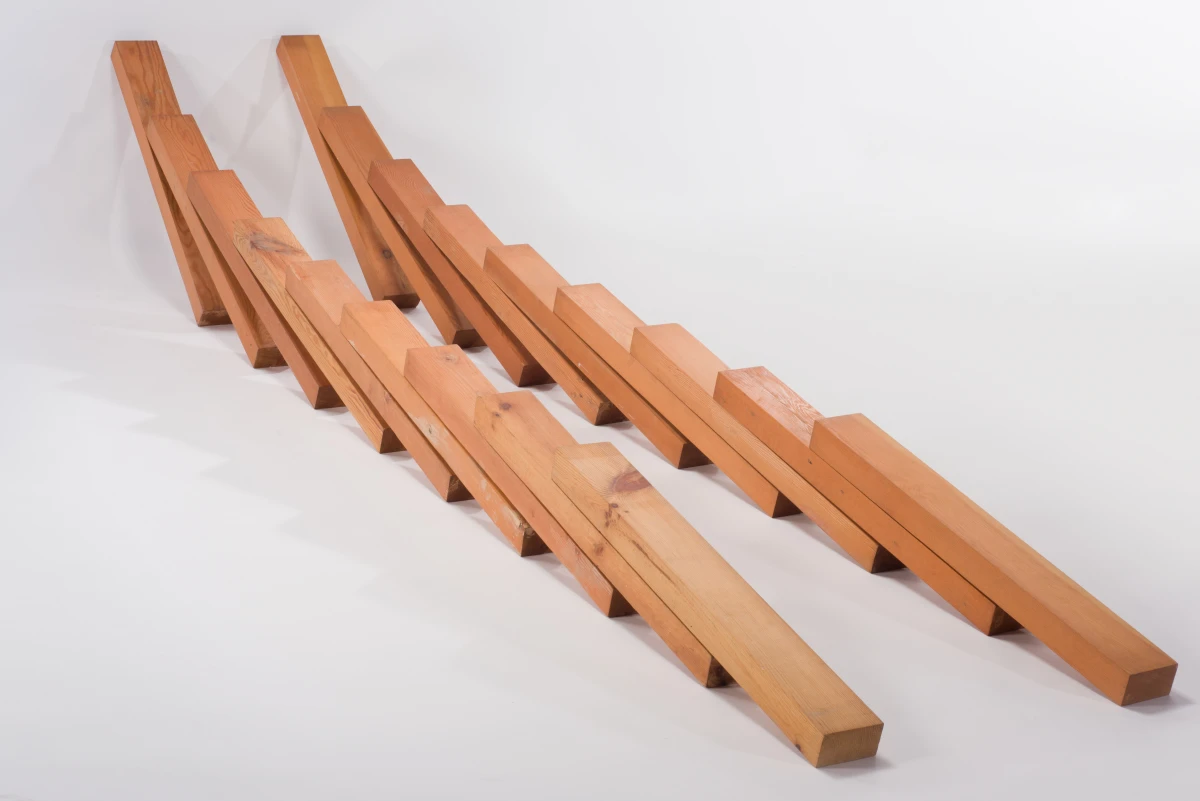Dancers and Musicians from NAFA Respond to Kim Lim's Sculptures
Shaun Soh reflects on the artistic responses NAFA students created after experiencing Kim Lim's minimalist sculptures, which combine stillness and movement, at the Gallery.

Photograph by Lu Heng.
On 30 March and 1 April 2021, dance and music students from the the Nanyang Academy of Fine Arts (NAFA) performed at the National Gallery Singapore’s Supreme Court Terrace and Padang Atrium in response to Singapore-born British sculptor Kim Lim’s sculptures Day (1966), Echo (1967), Steps (1967) and Irrawaddy (1979).
This performance is an annual collaboration between the Gallery and NAFA that encourages students to learn and think more deeply about art. Under the guidance of Dr Joyce Koh, Vice Dean of Interdisciplinary Studies, and dance lecturer Madam Lim Fei Shen, students spent several months developing their dance and musical pieces in response to the themes of tension and contrast in Lim’s art pieces. The minimalist sculptures playfully combine organic and geometric forms, stillness and movement, as well as emptiness, openness and completeness in relation to and contrast with each other.
Students were fascinated by the layered structure of Steps, and responded with a two-part piece consisting of a violin melody and an arpeggio accompaniment on the piano. The melody repeats with different tonalites and speeds to illustrate the circular pattern of the sculpture. In response, the configurations and movements of the dancers also playfully reflect this steplike yet circular schema.

The sculpture Day exudes simplicity, lightness and elegance. Responding to these features and its architectural shape, the dance movements play with ideas of a sundial, light and shadow, and angular shapes. Working in tandem, the musical motives progress through a series of circle of fifths key-relations as a way to suggest the cyclical passing of a day, from the moment the sun rises till sunset.

The performance Irrawaddy celebrates the vibrant and abundant Irrawaddy river in Myanmar in three parts. The work opens with a harp chordal phrase against a backdrop of sounds of the river flowing. The incessant flow of the water is depicted by lyrical dance gestures accompanied by pizzicato strings and enigmatic flute motives. As the dance movements increase in speed and rhythm, the musical texture becomes lush and full in the second section, evoking the meeting of several streams. This intensity is sustained and gradually builds up to the climax signalled by the rhythmic and swirling motions of the maracas, which portray the eddy formed by the currents.

To evoke the sense of beauty in nature, the performance Echo recreates sounds of water, fire, wind, footsteps and the crushing of leaves. Dancers echo the melodic contour of the erhu solo with movement, as though drawing out a reciprocal relationship between objects and their surroundings. Students also drew inspiration from American author Zig Ziglar:
"Life is an echo. What you send out comes back. What you sow, you reap. What you give, you get. What you see in others, exists in you.”

Editor's note: Visit the Gallery and experience Kim Lim’s sculptures at our long-term exhibitions in the DBS Singapore Gallery (City Hall Wing, Level 2) and UOB Southeast Asia Gallery (Supreme Court Wing, Levels 3-5).












